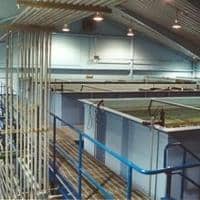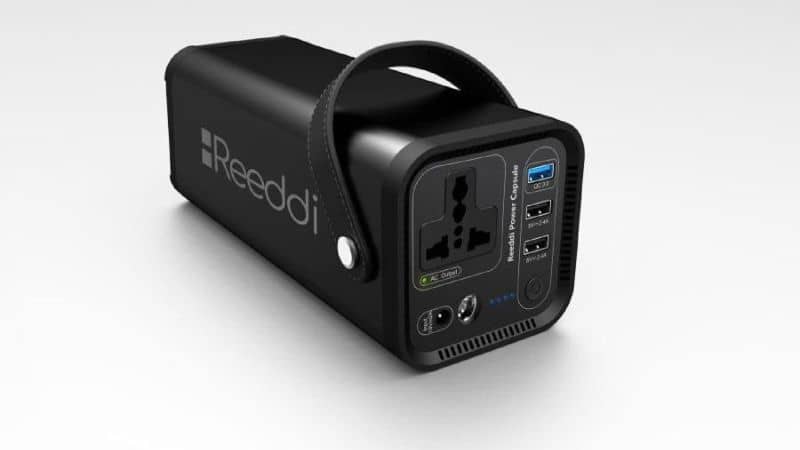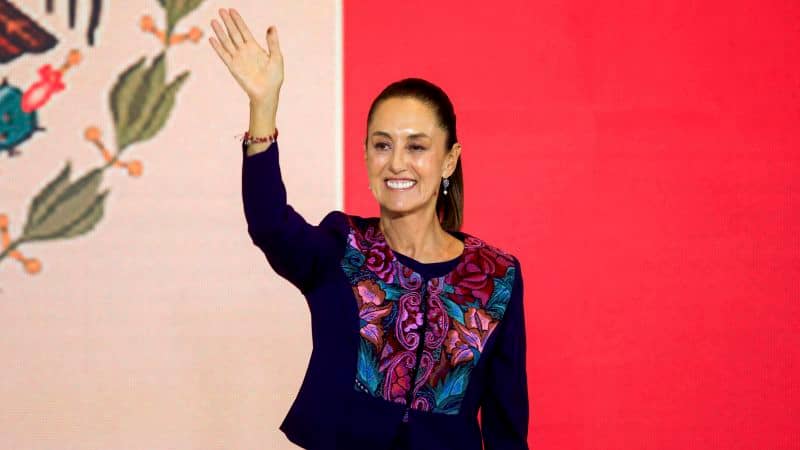America is great because of its willingness to accept talented immigrants. That’s what Nandan Nilekani, the billionaire co-founder of Infosys Technologies, would tell President Trump if he had the opportunity. “If you
LAKE GEORGE — The Village Board is expected to announce a moratorium on any new commercial property water hookups in the town outside of the village in order to conduct a 10- to 12-week water study.
The board will vote on the resolution at its December meeting. The moratorium is proposed for six months.
According to a news release from the village, the board hired C.T. Male Engineering to conduct a study of the village’s water system to evaluate options for the growing needs of the area.
Lake George Town Supervisor Dennis Dickinson said Richard Schermerhorn’s plans to develop housing at the former site of Water Slide World was a driving force in deciding to conduct the study.
“We’ve had some interest from developers for large water usage projects and the village has enough water, but they want to make sure they can get to the volume needed for these projects, so that prompted us to have the water study done,” Dickinson said.
People are also reading…

The village of Lake George water filtration system currently serves over 1,800 residents and businesses in the town and village of the Lake George. The town and village boards have agreed to conduct a study looking at options to continue to provide water services to the growing development in the area. (Dec. 2022)
Provided photo (File photo)
While the town and village both operate water filtration plants, the town-operated facility in Diamond Point serves fewer than 100 residents with a well water system, while the village plant serves over 1,800 residents in the village and town with more than 1,400 water service connections.
Currently, the village water is pumped directly from Lake George by a pump station on Beach Road to a modern water filtration station on Ottawa Street and distributed throughout the system.
The village supplies users north to Hearthstone Park on Route 9N and south to Route 9L, as well as on the east side of the lake.
The village news release not only cited the plans for the old Water Slide World site, but also the recent conversion of the old Ramada Inn into residences and multiple other condo developments on Route 9L and Bloody Pond Road, as reasons to conduct the water study and explore options for services.

Demolition was ongoing this fall at the former home of Water Slide World, after real estate developer Richard Schermerhorn purchased the property with plans to build housing on the site. The plans, while not yet submitted to the town of Lake George, are a driving force behind the decision for a townwide water study.
“Village officials are concerned that the current filtration plant will not be able to service the expected higher volume and have joined with the Town Board to finance the $43,000 study. The study is expected to take 12-14 weeks,” Tuesday’s release states.
The study is meant to examine the present capacity of the system, point out areas of concern or possible limitations and provide conceptual designs of improvement to continue to accept additional customers in the planned areas of development.
“We do not want to hinder growth in the town of Lake George,” village Mayor Bob Blais said. “We want to be able to service all customers that wish village water in the town-outside-village and at the same time maintain an adequate reserve for the village.”
Jana DeCamilla is a staff writer who covers Moreau, Queensbury, Warren County and Lake George. She can be reached at 518-903-9937 or [email protected].
Get local news delivered to your inbox!
Subscribe to our Daily Headlines newsletter.
Don't Miss
CNN — Although Nigeria has vast energy reserves, more than 92 million people in the country live without access to
Story highlights Japan’s innovative wearable devices includes Archelis, a “standing” chair designed for surgeons. Tokyo’s first Wearable Expo debuted in
A summer of extreme heat and drought around the world has been a reminder that water scarcity is a pressing
CNN
—
Although Nigeria has vast energy reserves, more than 92 million people in the country live without access to electricity, according to the International Energy Agency. Those who are connected to the electricity grid have to contend with frequent power cuts, which cost the country $28 billion a year – almost 2% of its GDP.
As a result, many Nigerians rely on petrol and diesel to fuel the generators that power their homes and businesses.
But generators are noisy, expensive, and pollute the air. Fuel shortages were a key issue in Nigeria’s recent presidential election and have made it increasingly difficult to run generators.
Entrepreneur Olugbenga Olubanjo is offering an alternative. His company Reeddi rents out small, lightweight solar-powered batteries called “Reeddi Capsules” that can power devices including TVs, laptops and refrigerators.
Reeddi was one of the finalists for Prince William’s Earthshot Prize, which recognizes ambitious efforts to fix environmental problems. In a podcast, the Prince of Wales said that “the capsule will have a huge influence on communities where energy poverty is a big deal.”
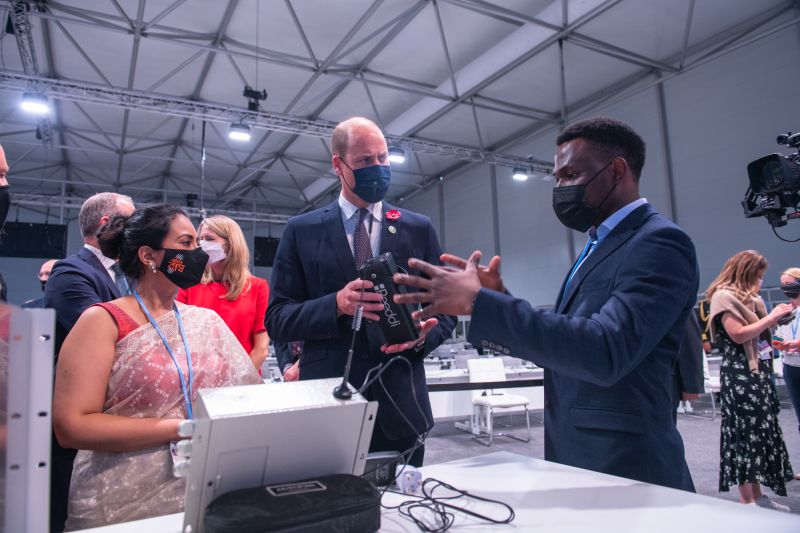
Olubanjo grew up in Nigeria and says that during his time studying engineering at the University of Ibadan, he often had to work on his assignments while contending with power cuts. As a postgraduate, he studied at the University of Toronto, in Canada. “For the first time in my life, I had access to electricity, and I saw my own productivity quadruple,” Olubanjo said.
Often, when calling family and friends back home, their power would go off, highlighting the energy inequality. “As I had a deep understanding of the community, I felt obliged to do something,” he said.
Reeddi Capsules can be bought along with a solar panel for 199,000 Nigerian Naira (around $430) or rented from “mom-and-pop shops” for 24 hours for around 50 cents, charged using solar panels operated by Reeddi. Olubanjo says one battery can power a TV for around five hours, or a 15-watt fan for 15 hours.
That makes it considerably more expensive than using mains electricity, but it’s often cheaper than running a generator.
Joel Jewell, a trader in Ogun State, says he uses the capsule most days to charge his laptop and phone. Without it, he is forced to rely on his generator during the regular power cuts. “We sometimes don’t (even) get two hours of power supply,” he said. “And Reeddi coming is a kind of an answer to prayer.”
Currently, the batteries are only available in Nigeria, where Olubanjo says they are used by more than 1,600 people, mainly in Lagos and Ogun State. But across the continent, more than 600 million people lack access to electricity, according to the International Energy Agency.
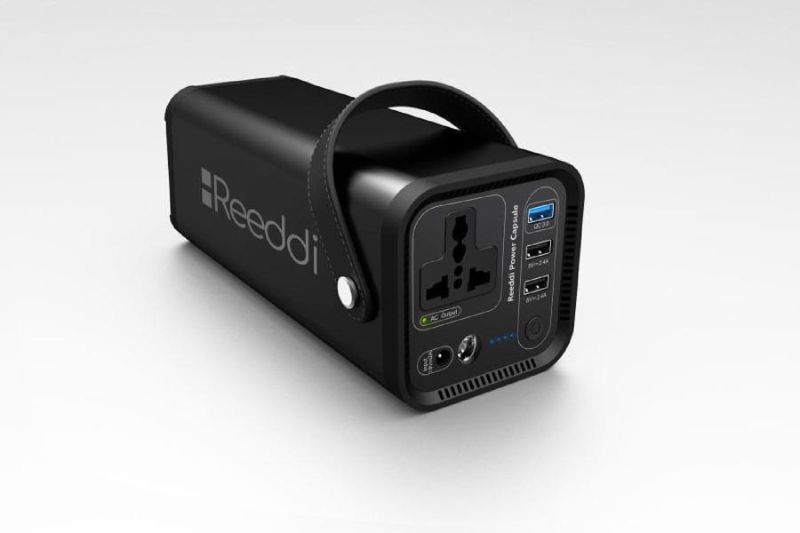
Olubanjo says organizations in countries including Uganda, Ghana and South Africa have expressed an interest in the Reeddi Capsule. “We’re going to try our best to optimize what we have in Nigeria before we scale it to that broader part of Africa,” he said.
Reeddi is not the only company offering battery packs as an alternative to generators. UK-based Mobile Power rents out batteries in countries including Nigeria, Zambia and Ghana.
Anita Otubu, a senior director of Sustainable Energy for All – a UN-affiliated organization that works to improve access to energy – says “companies like Reeddi are key contributors to reducing Nigeria’s access deficit.”
But she adds that if Reeddi is to scale up its business, it will need to make the battery rentals cheaper “or increase the capacity of each system, to enable Nigerians to have value for money when they purchase such systems.”
For Olubanjo, the company’s biggest challenge is keeping up with demand, with each batch of batteries taking three to four months to produce. But he is confident Reeddi can have a wider impact.
“The goal is to make the future (brighter) for a lot of Nigerians and Africans,” he said.
Don't Miss
LAKE GEORGE — The Village Board is expected to announce a moratorium on any new commercial property water hookups in
Lagos, Nigeria CNN — Nigerians began voting on Saturday in delayed governorship polls, weeks after a controversial and disputed presidential
Story highlights Japan’s innovative wearable devices includes Archelis, a “standing” chair designed for surgeons. Tokyo’s first Wearable Expo debuted in
What if you could wear a chair?
Story highlights
Japan’s innovative wearable devices includes Archelis, a “standing” chair designed for surgeons.
Tokyo’s first Wearable Expo debuted in 2015 and was largest in the world.
Japan’s wearable tech market is predicted to grow from 530,000 in 2013 to 13.1 million units in 2017.
CNN
—
What do Discman, Tamagotchi, and Game Boy have in common?
They’re all landmark Japanese inventions from the 80s and 90s, symbols of an era when the Asian nation was a world leader in tech innovation.
But with the rise of Silicon Valley, and American tech giants such as Google and Apple, has seen Japan produce less era-defining tech over the past two decades.
That, says Professor Masahiko Tsukamoto, of Kobe University’s Graduate School of Engineering, is about to change thanks to a new generation of young entrepreneurs, an uptick in international collaborations, and new partnerships with university scientists.
Japan’s focus this time around is not on smart phones or gaming, but wearable chairs, smart glasses and dog communication devices.
In short, wacky wearable tech.
In 2013, Japan sold 530,000 units of wearable tech devices, according to Yano Research Institute.
That figure is predicted to leapfrog to 13.1 million units in 2017.
Perhaps the best indication of the boom in this industry was the introduction of Tokyo’s first Wearable Expo in 2015 – at launch, it was the largest wearable tech fair in the world with 103 exhibitors.
It has featured electronic kimonos, cat communication devices, and electronic gloves to record a pianist’s finger work.
At the next show, from January 18 to 20, 2017, the organizers expect more than 200 exhibitors and 19,000 visitors.
“With better functionality, lighter components and smaller designs, wearing devices is now no longer a fantasy,” says show director Yuhi Maezono. “Wearables are gathering attention as the next big growth market.”
Inupathy is a dog harness slated to launch at the end of this year that will allow pet owners to communicate with their dogs.
As well as a heart monitor, the harness features noise-canceling technology which can isolate the animal’s heartbeat and track its reactions to stimulus, such as food, games, people and toys.
With this data, the harness assesses a dog’s mood and changes color to inform the owners.
Equipped with six LED lights, the collar glows blue to show calm, red for excitement, and displays a rainbow theme for happiness.
Joji Yamaguchi, CEO of Inupathy, was inspired by his Corgi, Akane, who was a nervous puppy. To better understand the dog’s anxiety, the biologist developed Inupathy to monitor his heart rate.
“I always felt like I couldn’t understand Akane very well and I wanted to get be closer to him,” says Yamaguchi.
“Buddhism and old Japanese religion says every animals, plants, and even rocks have spirit inside. It’s stressful when you can’t solve problems that are upsetting them.”
Yamaguchi expects wearable wellness tracking will have applications for humans, too.
“Personalization, of artificial intelligence will be a game-changer,” says Yamaguchi.
“For instance, if you show a certain behavior before you start feeling depressed, predicting your depression from that behavior is extremely valuable for an individual. An AI that works personally for you will eventually make this possible.”
Archelis – a wearable chair launched in Japan this year – is also creating a buzz internationally.
A collaboration between Nitto mold factory, Chiba University, Japan Polymer Technology and Hiroaki Nishimura Design, in Japan, it was initially intended for surgeons, who need to rest their legs during long operations.
The chair enables its wearer to effectively sit down and stand up at the same time.
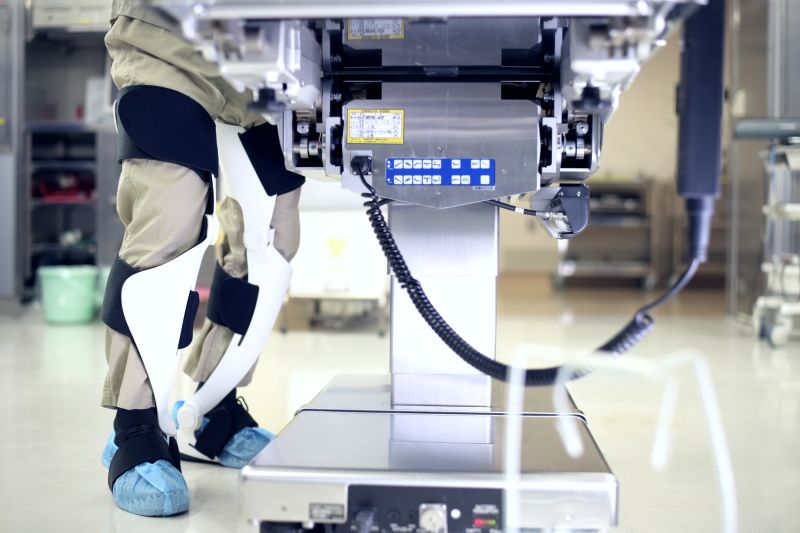
“The Archelis concept is very simple, like the simplicity of Columbus’ egg,” says Dr Hiroshi Kawahira, the surgeon behind the concept. “Long surgeries can result in back pain, neck pain, and knee pain – especially for surgeons who are older.”
Made of 3D-printed panels, Archelis does not require any electrical components or batteries.
The innovation is in the effective design: flexible carbon panels wrap around the buttocks, legs and feet to provide support and minimize pressure on joints.
The system stabilizes the ankles and knees, so the pressure from being upright is spread evenly across the shins and thighs.
Though the wearer appears to be standing, in fact, they are resting their back and legs while working on their feet.
Other wearables are on the smaller side.
Measuring about 3 inches long, BIRD is essentially a modern thimble that turns your fingertip into a magic wand.

Using algorithms to decode a user’s intent, the device also features precise sensors that track direction, speed, and gestures.
The technology enables users to turn any surface into a smart screen, as well as interact with other smart devices.
Walking around at home, users can project a laptop screen onto a wall, switch on a coffee machine, read on any surface, and make online purchases with the point or swipe of a finger.
The developers – Israel-based MUV Interactive and Japan-based Silicon Technology – expect BIRD to be embraced by the education and corporate sectors, thanks to its ability to create collaborative presentations.
Don't Miss
What to know about the Trump indictment on the eve of his court appearance Source link
A “Help Wanted” sign is seen at a Golden Krust location on June 7 in the Flatbush neighborhood of Brooklyn
LAKE GEORGE — The Village Board is expected to announce a moratorium on any new commercial property water hookups in
A summer of extreme heat and drought around the world has been a reminder that water scarcity is a pressing issue and one that will only get worse with climate change. Already, more than two billion people worldwide lack easy access to clean water, according to the World Health Organization (WHO).
For some countries, desalination plants offer a solution – removing salt from seawater to satisfy their freshwater needs. The Middle East has the highest concentration of these in the world. But such plants, still mostly powered by fossil fuels, are energy-intensive and the process creates an extremely salty wastewater known as brine, which can damage marine ecosystems and animals when it’s pumped back into the sea.
That’s why some startups and researchers are updating centuries-old solar still technology, which uses only sunlight to purify water. While the technology is still a long way off from producing the volume of freshwater generated by desalination plants, it could prove valuable for off-grid or coastal communities.

Abu Dhabi-based startup Manhat, founded in 2019, is developing a floating device that distills water without requiring electricity or creating brine. It consists of a greenhouse structure that floats on the surface of the ocean: sunlight heats and evaporates water underneath the structure – separating it from the salt crystals which, are left behind in the sea – and as temperatures cool, the water condenses into freshwater and is collected inside.
Manhat wants to use its desalination devices for agriculture, creating floating farms surrounded by multiple devices for on-the-spot irrigation, as shown in this rendering. Credit: Manhat
“It’s really similar to the natural water cycle,” says Dr. Saeed Alhassan Alkhazraji, the company’s founder and associate professor at Abu Dhabi’s Khalifa University. He says solar evaporation has long been used for this purpose, but typically it involves putting water in a basin where, once the water has evaporated, salt is left behind.
Unlike traditional solar stills, Manhat’s device floats in the ocean, drawing water directly from the sea. Salt does not accumulate in the device and the angle of the collection cylinder prevents water droplets evaporating back to the sea, says Alhassan.
Earlier this year, Manhat’s patented technology won the Water Europe Innovation award for small and medium enterprises with breakthrough solutions in the water sector, commended for its ability to produce freshwater with “zero carbon footprint and zero brine rejection.”
The startup plans to harness its technology in floating farms, which would use its desalination devices to provide freshwater irrigation for crops without the need for water transportation and its associated emissions.
This would benefit arid coastal areas where land is intensively farmed, says Alhassan. “If you produce (fresh) water on the sea’s surface and use it for farming, you can effectively allow arable land to be rejuvenated,” he says, adding that the technology could work well for countries like the Maldives that have little land available for desalination plants.
Others have also been innovating with solar stills. In 2020, researchers at the Massachusetts Institute of Technology (MIT) developed a free-floating desalination unit consisting of a multilayer evaporator that recycles the heat generated when the water vapor condenses, boosting its overall efficiency.
While field tests are ongoing, it was touted as a technology that could “potentially serve off-grid arid coastal areas to provide an efficient, low-cost water source.” Researchers suggested it could be configured as a floating panel on the sea, delivering freshwater through pipes to the shore, or it could be designed to serve a single household, using it atop a tank of seawater.
Geoff Townsend, who works on innovations in water scarcity for water treatment and hygiene company Ecolab, believes that while solar still innovations are unlikely to replace conventional desalination, they could “supplement existing technology, reducing the overall carbon footprint of desalination.”
But he cautions that “desalination typically needs to provide a very predictable supply of water,” and that “there will be potential concerns on the extent to which diurnal (daily) and seasonal changes in performance could impact the ability to achieve the minimal production requirement.”
An even bigger challenge for this kind of technology is scale. “A drawback is their intrinsic low efficiency,” says Townsend, adding that they tend to take up a lot of space for the small amount of water they produce.
MIT’s device was found to produce around five liters of freshwater per hour for every square meter of solar collecting area. Manhat’s current floating prototype, which covers 2.25 square meters but only has one square meter open to water, produces 1.5 liters of freshwater per day – a drop in the ocean, considering the World Health Organization estimates that an average person needs at least 50 to 100 liters a day to be healthy
Alhassan says Manhat is working to increase this volume to five liters by optimizing materials and design, with the long-term goal of reaching at least 20 liters. The startup has raised $130,000 in funding so far, predominantly via a collaboration with Abu Dhabi Ports, but with increased investment he is confident these targets can be met.
A pilot of the floating farm concept will begin next year. By linking up multiple modular devices in a grid formation, Manhat believes that its current technology could provide enough desalination to grow less water-intensive crops, such as mushrooms, and as the devices improve they could start targeting other crops such as lettuce or tomatoes.
Despite the challenges, Alhassan believes solar stills will one day become an important source of freshwater. “We have to accept the fact that seawater should be a key player in providing freshwater,” he says. “But we need to have a solution that will minimize CO2 emissions and eliminate brine altogether.”
Don't Miss
LAKE GEORGE — The Village Board is expected to announce a moratorium on any new commercial property water hookups in
CNN — Although Nigeria has vast energy reserves, more than 92 million people in the country live without access to
CNN — At the far southwestern tip of England, dangling into the Atlantic, the remote region of Cornwall rarely feels
‘America First’ could turn into ‘India First’

America is great because of its willingness to accept talented immigrants.
That’s what Nandan Nilekani, the billionaire co-founder of Infosys Technologies, would tell President Trump if he had the opportunity.
“If you really want to keep the U.S. … globally competitive, you should be open to overseas talent,” Nilekani said on the sidelines of CNN’s Asia Business Forum in Bangalore.
Infosys (INFY) is India’s second-largest outsourcing firm, and a major recipient of U.S. H-1B visas. The documents allow the tech firm to employ a huge number of Indians in U.S. jobs.
The Trump administration is now considering significant changes to the visa program. Press Secretary Sean Spicer said in January that Trump will continue to talk about reforming the H-1B program, among others, as part of a larger push for immigration reform.
Curbs on the visas could hit Indian workers hardest.
India is the top source of high-skilled labor for the U.S. tech industry. According to U.S. government data, 70% of the hugely popular H-1B visas go to Indians.
Shares in several Indian tech companies — including Infosys — plunged spectacularly two weeks ago amid reports of an impending work visa crackdown.
Related: Tech industry braces for Trump’s visa reform
Nilekani said it would be a mistake for the administration to follow through.
“Indian companies have done a great deal to help U.S. companies become more competitive, and I think that should continue,” Nilekani said. “If you look at the Silicon Valley … most of the companies have an immigrant founder.”
India’s contribution to the industry — especially at top levels — has been outsized. The current CEOs of Google (GOOG) and Microsoft (MSFT), for example, were both born in India.
Related: India freaks out over U.S. plans to change high-skilled visas
But Nilekani, who is also the architect of India’s ambitious biometric ID program, suggested that India would ultimately benefit from any new restrictions put in place under Trump’s “America First” plan. If talented engineers can’t go to the U.S., they will stay in India.
“This issue of visas has always come up in the U.S. every few years, especially during election season,” he said. “It’s actually accelerated the development work [in India], because … people are investing more to do the work here.”
Nilekani cited his own projects for the Indian government as an example.
The Bangalore-born entrepreneur left Infosys in 2009 to run India’s massive social security program, which is known as Aadhaar. As a result of the initiative, the vast majority of India’s 1.3 billion citizens now have a biometric ID number that allows them to receive government services, execute bank transactions and even make biometric payments.
“It was built by extremely talented and committed Indians,” Nilekani said. “Many of them had global experience, but they brought that talent and experience to solve India’s problems.”
Nilekani said the country’s massive youth population is increasingly choosing to stay home and pitch in.
“It’s India first,” he said.
CNNMoney (Bangalore, India) First published February 13, 2017: 2:19 PM ET
Don't Miss
Presidential candidate Xóchitl Gálvez waves to supporters during an election campaign rally in Tarimbaro, Michoacan state, Mexico, on April 21.
LAKE GEORGE — The Village Board is expected to announce a moratorium on any new commercial property water hookups in
Chris Kirk speaks to CNN after first PGA Tour win in 8 years American golfer Chris Kirk had won four
The US is moving $3.5 billion to the new “Afghan Fund,” but officials said they won’t release the money imminently to an institution in Afghanistan because there is no trusted institution to guarantee the funds will benefit the Afghan people, the officials said.
Instead, it will be administered by an outside body, independent of the Taliban and the country’s central bank.
“The Fund may use assets to provide Afghan banking sector liquidity, keep Afghanistan current on its debt service obligations, support exchange rate stability, transfer funds, as appropriate to public Afghan financial institutions, or any other use for the benefit of the Afghan people that is approved by the Fund’s Board of Trustees,” said a State Department official.
Down the line, transferring these funds to the Afghan central bank could happen but it would depend on two key factors: responsible management of the bank and assurances that the funds will not be diverted to terrorists or criminals, the officials added.
“We do not have that confidence today,” said a senior US official. At minimum the Afghan central bank will need to “demonstrate its independence from political influence and interference.” It will also need to demonstrate it has “instituted adequate anti-money laundering and countering the financing of terrorism controls” and “complete a third party needs assessment and onboard a reputable third party monitoring,” the official explained.
The US has been clear in telling the central bank — known as the Da Afghanistan Bank (DAB) — what steps it would need to take and reiterated those steps in a letter this week from the United States deputy secretary of the Treasury, which CNN reviewed. The letter cites the need for the DAB to demonstrate independence from Taliban influence and interference, among other expectations.
Earlier this year President Joe Biden signed an executive order allowing for the $7 billion in frozen assets from Afghanistan’s central bank to eventually be distributed inside the country and to potentially fund litigation brought by families of victims of the September 11, 2001, terror attacks. The funds were frozen by the US government after the Afghan government collapsed last year and the Taliban took over control of the country.
Afghanistan — now under Taliban control for over a year — is facing a potential economic catastrophe. Lawmakers have pushed the Biden administration to release the funds in order to keep the country running, for necessities such as paying teacher salaries. Last month, the UN said that the humanitarian support being provided to the country is not enough to sustain its economy.
The timing of when the central bank could meet the expectations laid out is hard to estimate, US officials said this week. In recent months US officials have said that recapitalization of the Afghan central bank is not a “near-term option.”
Setting up the new fund will enable the funds to flow quickly, without having to go through the central bank to distribute funds.
“The people of Afghanistan face humanitarian and economic crises born of decades of conflict, severe drought, COVID-19, and endemic corruption,” said Wendy Sherman, US deputy secretary of state. “Today, the United States and its partners take an important, concrete step forward in ensuring that additional resources can be brought to bear to reduce suffering and improve economic stability for the people of Afghanistan while continuing to hold the Taliban accountable.”
The fund’s board will consist of a US and Swiss government official, as well as two Afghan economic experts. The Taliban is not part of this financing mechanism, the officials emphasized.
Still, the US remains in contact with the Taliban for “pragmatic engagement” in support of the Afghan people and to advance America’s interests, one of the senior US officials said.
By setting up this mechanism the US is making it clear that they intend to get the frozen funds to the Afghan people, though they do not intend to recognize the Taliban which is currently leading the country.
“I think relief organizations as well as countries that care about Afghans have sought to continue to work with almost 500,000 civil servants that continue to work on behalf of the people that includes teachers and includes health workers includes engineers, and it’ll include depth technocrats as well,” said the senior US official.
CORRECTION: This story has been updated to reflect the new fund will distribute frozen money independent of the Taliban and Afghanistan’s central bank.
Don't Miss
CNN — If you’re a parent, heading out the door before a car ride with the kids probably goes a
Editor’s Note: This story was originally published in April 2023. CNN — Slumped on his club, head buried in his
LAKE GEORGE — The Village Board is expected to announce a moratorium on any new commercial property water hookups in



